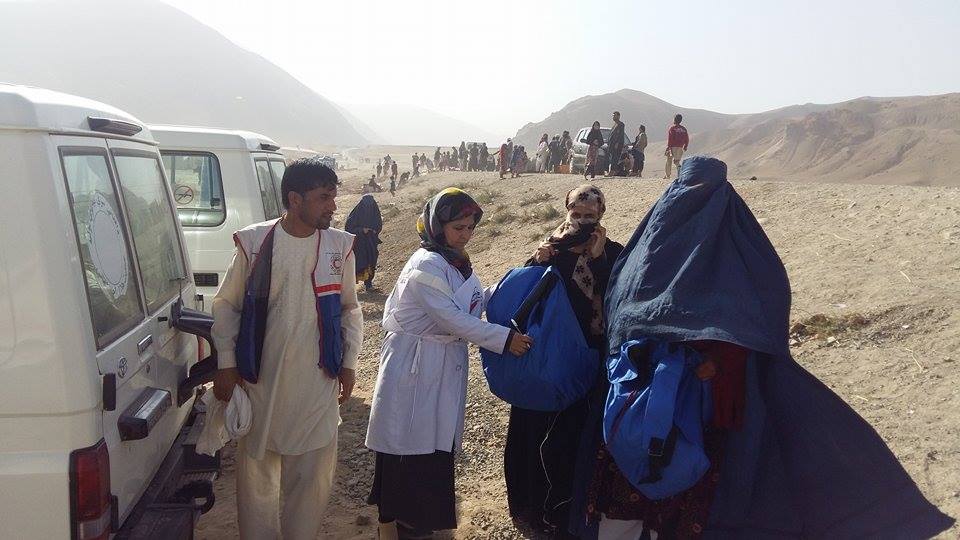“I examined the mother, only to find out that she had carried her dead fetus for weeks,” said Alia Ayar, a UNFPA midwife providing obstetric emergency care in times of humanitarian crises around Afghanistan. “She suffered severe pains and fever and couldn’t do the chores around the house, until the family (finally) decided to allow her to see a health service provider.”
Afghanistan has one of the highest maternal and neonatal mortality rates in the region: 327 maternal deaths per 100,000 live births (AMS 2010) and 55 under-five deaths per 1,000 live births (AfDHS 2015). These numbers show a significant reduction from a maternal death rate of 1600 per 100,000 live births and 87 under-five deaths per 1,000 live births 15 years ago.
“The beautiful and rugged mountains of Afghanistan provide a big challenge for access to health facilities, especially for pregnant women seeking antenatal and delivery services”, said Dr. Bannet Ndyanabangi, UNFPA representative in Afghanistan. “This, combined with other cultural and economic factors contribute to increased maternal deaths and ill-health among women of reproductive age.” 
The causes of maternal deaths are many, from limited number of health facilities, to low knowledge about reproductive health, early/child marriage, multiple and consecutive pregnancies, shortages of female health care providers and many other cultural barriers hindering women’s access to health services .
At the same time, the recent wave of returnees and the large number of IDPs is posing a further challenge on already over stretched health care facilities and health care professionals in the country.
“When there is a humanitarian situation UNFPA deploys Alia and many of other midwives that UNFPA hires to provide emergency obstetric health care,” said Abdul Qader Raza UNFPA Humanitarian Response Officer. “The midwives rise to the occasion and save many lives.”
Alia is member of a team, jointly funded by UNFPA and other organisations, with four other health service providers including a nurse and/or a doctor, and a pharmacist who provide basic health care services during humanitarian emergencies.
Anisa is another midwife who has been providing basic reproductive health services for the past seven months to IDPs who escaped conflict from Kunduz located in Baharak district of Takhar.
While the majority of families displaced from Kunduz in Takhar have returned and the numbers remaining decrease every day, Anisa says she still sees at least four pregnant mothers on a daily basis and refers complicated cases to the Baharak district clinic using the only vehicle that her mobile team has.
Available data in Afghanistan show that there are approximately 4.5 million Afghans living in areas without any type of health facility. In addition, estimates show that a further one million returnees and IDPs projected to be on the move in Afghanistan in 2016 will add to the number of people in need of humanitarian assistance including health care.
A secondary analysis of the 5.5 million (total of people living in areas without access to health facilities and returnees and IDPs) population indicate that an estimated four per cent of this vulnerable population are pregnant mothers who will require obstetric care including skilled birth attendance within a 12 month period. In other words, an estimated 18,000 pregnant mothers will require obstetric care and skilled birth attendance every month.


